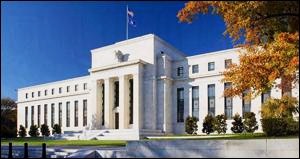Courtesy of Pam Martens
On July 30, 2019, the day before the U.S. central bank, the Federal Reserve, cut interest rates by one-quarter of one percent, the yield on the 10-year U.S. Treasury note closed the day at 2.06 percent. Early this morning, the yield on the 10-year U.S. Treasury stood at 1.65 percent, a stunning decline of 41 basis points in 8 days. A yield evaporation on U.S. sovereign debt that resembles a snow cone in July is not consistent with a strong economy. It is consistent with a seriously sputtering economy and a stock market out over its skis in terms of valuation.
In addition to the collapsing yield in the benchmark 10-year, we now have a seriously inverted yield curve with the 3-month T-bill yielding 2.01 percent this morning versus the 10-year T-note yielding 1.65 – a difference of 36 basis points.
An inverted yield curve means that investors are gobbling up longer-term Treasury debt (thus driving down its yield) on the expectation that as the economy slows or goes into recession, there will be less demand for money, thus lower inflation, thus ever lower long-term yields to be had; thus it’s better to grab what you can get now.
The yield on the 10-year Treasury may be falling more rapidly than it otherwise would because the Federal Reserve finds itself in the unenviable situation of having a half empty arsenal to manage a future recession or more severe economic upheaval.
When the Fed faced the financial slowdown of 2007 and the epic financial crash of 2008, it started with 5.25 percent interest in its arsenal, allowing it to slash rates by a half-percentage point in September of 2007; another quarter point in October; another quarter point in December; a three-quarter point cut on January 22; another panic cut of a half-point on January 30; another three-quarter point cut on March 18; followed by four more cuts that year that evaporated the Fed Funds rate to the so-called zero-bound range of 0 to 0.25 percent.
…




